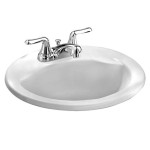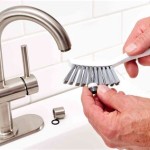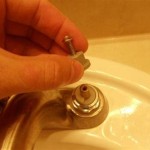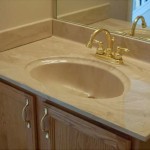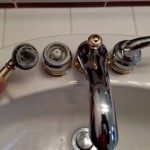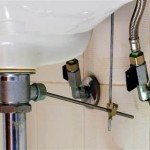Average Cost to Replace a Bathroom Vanity: A Comprehensive Guide
Replacing a bathroom vanity can dramatically improve the aesthetics and functionality of a bathroom. Whether upgrading an outdated design, increasing storage space, or simply replacing a damaged unit, understanding the associated costs is crucial for effective budgeting and planning. The total cost of a bathroom vanity replacement encompasses various factors, including the vanity itself, installation labor, plumbing adjustments, and potential miscellaneous expenses. This article provides a detailed breakdown of these cost components and influencing factors to help homeowners make informed decisions.
Factors Influencing Vanity Costs
The price of a bathroom vanity is determined by a range of characteristics, from its size and material to its style and features. Understanding how these elements contribute to the overall cost is essential for making budget-conscious choices.
Vanity Size: Smaller vanities, typically used in powder rooms or smaller bathrooms, are generally less expensive than larger vanities designed for master bathrooms. A single-sink vanity unit will naturally cost less than a double-sink vanity, which requires more materials and a more complex design. Standard vanity widths typically range from 24 inches to 72 inches or more. As the width increases, so does the price.
Vanity Material: The material of which the vanity cabinet is constructed plays a significant role in its cost. Common materials include:
- Particleboard or MDF (Medium Density Fiberboard): These are the most budget-friendly options. Particleboard is often laminated with a veneer or melamine finish. MDF offers a smoother surface and greater resistance to warping than particleboard.
- Plywood: A more durable and water-resistant option than particleboard or MDF. Plywood is typically used for the vanity's frame and sides.
- Solid Wood: The most expensive option, offering superior durability, aesthetics, and moisture resistance. Popular choices include oak, maple, cherry, and walnut. Solid wood vanities often feature intricate detailing and high-quality finishes.
- Metal: Known for its modern and industrial aesthetic. Offers durability and water resistance but may require special cleaning agents to maintain its appearance.
Countertop Material: The countertop material also significantly impacts the total cost. Common countertop options include:
- Laminate: The most affordable option, available in a wide range of colors and patterns. Laminate is relatively durable but can be susceptible to scratches and water damage.
- Solid Surface (e.g., Corian): A mid-range option that offers a seamless appearance and good durability. Solid surface countertops are non-porous and stain-resistant.
- Granite: A natural stone that offers a luxurious look and exceptional durability. Granite countertops are heat-resistant and scratch-resistant but require regular sealing to prevent staining.
- Quartz: An engineered stone that offers a similar appearance to granite but with greater consistency and less maintenance. Quartz countertops are non-porous and stain-resistant.
- Marble: A luxurious natural stone that offers a classic and elegant look. Marble countertops are porous and require careful sealing to prevent staining and etching.
- Tile: Can provide a unique and personalized look. Tile countertops can be relatively inexpensive depending on the type of tile used.
Style and Design: Elaborate designs, intricate detailing, and custom features naturally increase the cost of a vanity. Simpler, more streamlined designs tend to be more affordable. Consider the style of your bathroom and choose a vanity that complements the overall aesthetic. Options include modern, traditional, farmhouse, and contemporary styles.
Features and Accessories: Additional features like soft-close drawers and doors, built-in organizers, and integrated lighting can add to the cost of the vanity. Consider which features are essential for your needs and choose accordingly.
Labor Costs for Installation
Professional installation is often recommended for bathroom vanity replacement to ensure proper plumbing connections and a secure installation. Labor costs can vary depending on several factors, including the complexity of the job, the location of the bathroom, and the experience of the installer.
Plumbing Adjustments: Replacing a vanity may require adjustments to the existing plumbing. If the new vanity has a different configuration than the old one, relocating or extending water supply lines and drainpipes may be necessary. This can add significantly to the labor cost. In some cases, if the plumbing is old or corroded, it may be advisable to replace it entirely, further increasing costs.
Removal of the Old Vanity: The removal of the old vanity is typically included in the installation cost. However, if the old vanity is particularly difficult to remove or if demolition is required, the installer may charge an additional fee. Disposal of the old vanity may also incur a separate charge.
Installation Complexity: The complexity of the installation can also affect labor costs. Installing a vanity that requires custom modifications or that has complicated plumbing connections will typically cost more than installing a standard vanity in a straightforward manner. Wall-mounted vanities, for example, often require more precise installation and may therefore cost more to install.
Location: Labor costs can vary significantly depending on the location of the bathroom. Installing a vanity in a difficult-to-access area, such as a small bathroom or a bathroom on an upper floor, may increase labor costs. Consider the location when obtaining quotes from installers.
Hourly vs. Flat Rate: Installers may charge either an hourly rate or a flat rate for the installation. An hourly rate may be preferable for simple installations, while a flat rate may be more predictable for more complex jobs. Be sure to clarify the payment terms with the installer before beginning the project.
Licensing and Insurance: It is generally advisable to hire a licensed and insured installer. A licensed installer has met certain qualifications and is required to adhere to building codes. Insurance provides protection in case of accidents or damage during the installation process.
Additional Costs to Consider
Beyond the cost of the vanity and installation labor, several other potential expenses should be considered when budgeting for a bathroom vanity replacement project.
Faucet and Sink: New faucets and sinks are often purchased in conjunction with a new vanity. The cost of these items can vary widely depending on the style, material, and brand. Consider whether you need to replace the faucet and sink along with the vanity and factor these costs into your budget. The cost of faucet installation is often separate from the vanity installation cost.
Mirror and Lighting: Replacing the bathroom mirror or adding new lighting fixtures can enhance the overall look of the bathroom. The cost of these items will depend on the size, style, and features. Installation of new lighting fixtures may require the services of an electrician, which will add to the overall cost.
Painting and Wall Repair: Removing the old vanity may reveal damaged or unfinished walls. Painting or repairing these areas may be necessary to create a finished look. This may involve patching holes, sanding, and applying primer and paint. The cost of painting and wall repair will depend on the extent of the work required.
Permits: In some jurisdictions, a permit may be required for bathroom renovations, including vanity replacements. Check with your local building department to determine whether a permit is necessary and factor the permit cost into your budget. Failure to obtain a required permit can result in fines and delays.
Unexpected Issues: It is always wise to set aside a contingency fund to cover unexpected issues that may arise during the renovation process. These issues may include hidden plumbing problems, structural damage, or unforeseen complications during the installation.
Disposal Fees: Disposal of the old vanity, countertop, and other materials may incur disposal fees at your local landfill or waste disposal facility. Check with your local waste management authority for information on disposal fees.
Cost Saving Strategies: There are several strategies that homeowners can employ to reduce the overall cost of a bathroom vanity replacement. Consider purchasing a vanity that is pre-assembled to save on installation labor. Opt for more affordable materials, such as laminate countertops or MDF cabinets. Repurpose existing plumbing fixtures if they are in good condition. Obtain multiple quotes from different installers to ensure you are getting a competitive price. Undertaking some of the work yourself, such as removing the old vanity or painting the walls, can also save on labor costs, provided you have the necessary skills and experience.

Bathroom Vanity Installation Cost 2024 Average S

How Much Does Bathroom Vanity Installation Cost 2025

Cost To Replace Bathroom Vanity Evaluating Expenses

How Much Does Bathroom Vanity Installation Cost 2025

Cost To Replace Bathroom Vanity Evaluating Expenses

How Much Does It Cost To Install Bathroom Vanity

Bathroom Sink Cost To Replace Fixr Com

Cost To Replace Bathroom Vanity Evaluating Expenses

What Does Bathroom Vanity Installation Cost 2025 Data

How Much Does Bathroom Vanity Installation Cost 2025
Related Posts
